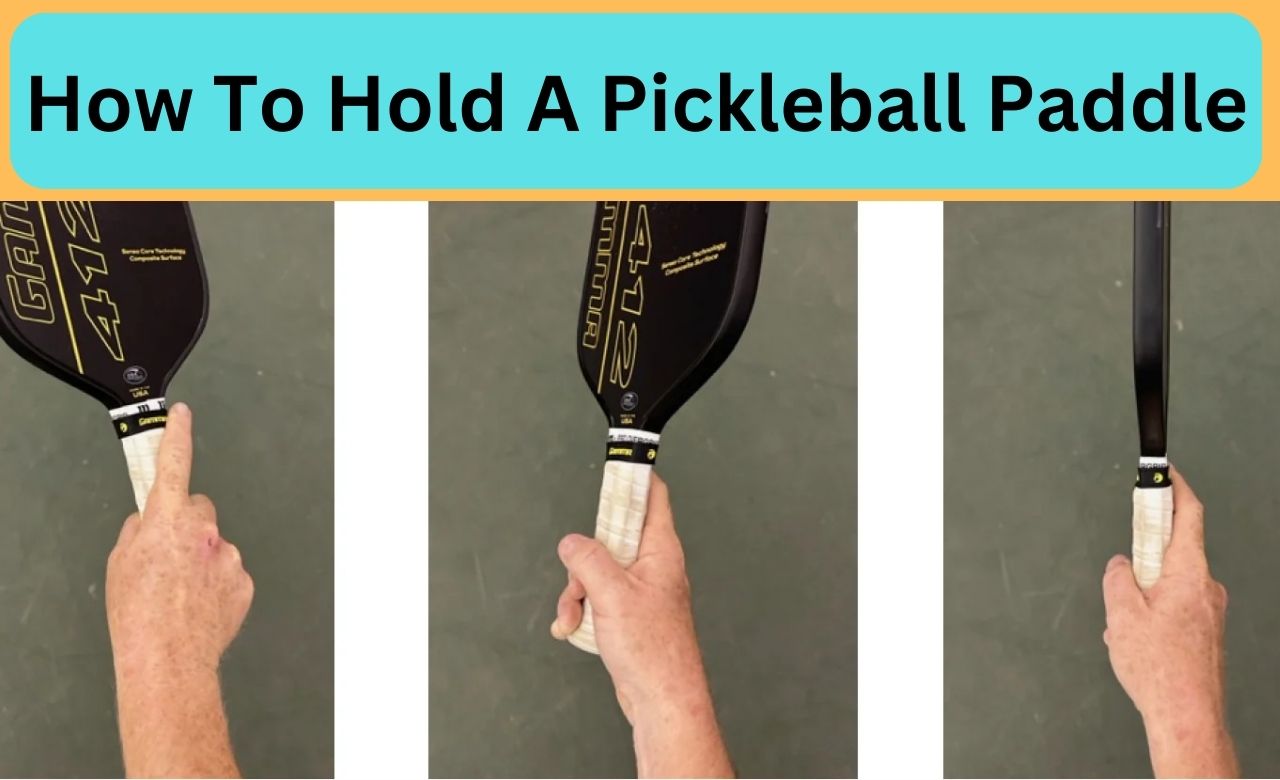How To Hold A Pickleball Paddle : Drawing from a decade of experience as both a pickleball player and coach, I’ve come to recognize the profound influence that a seemingly minor aspect of the game can exert on your performance: the grip on your paddle.
Surprising as it may sound, the grip you employ holds immense significance and can significantly alter your pickleball game. Today, let’s delve into this pivotal yet often overlooked aspect of pickleball strategy and uncover the potential benefits that come with mastering your grip.
How To Hold A Pickleball Paddle
Understanding the Grip’s Impact
Whether you’re a novice exploring the intricacies of pickleball or a seasoned enthusiast aiming to refine your skills, acknowledging the crucial role of the grip cannot be overstated.
The grip serves as your direct connection to the paddle, thereby influencing your control, power, and shot repertoire.
However, not all grips are created equal, nor do they cater to the same playing styles. There exist three primary pickleball paddle grips: the Eastern, Continental, and Western.
Each variant boasts distinct attributes, advantages, and limitations, catering to different approaches to the game.
The Eastern Grip : A Solid Foundation
The Eastern Grip serves as the starting point for many pickleball players, and rightfully so.
Characterized by placing the base knuckle of the index finger and the heel of the hand on the third bevel of the paddle handle, this grip offers simplicity and familiarity, particularly for those transitioning from other racket sports like tennis or badminton.
Despite its straightforward nature, the Eastern Grip delivers a balanced blend of power and control, making it ideal for baseline play and flat shots.
However, its effectiveness in generating topspin may be somewhat limited, potentially reducing the strategic depth of your game. While beginners find a reliable foundation in the Eastern Grip, more advanced players may seek alternatives as they aim to diversify their shot selection.
The Continental Grip : Versatility Personified
As players progress and seek to refine their gameplay, the Continental Grip often emerges as a preferred choice.
Positioned by resting the base knuckle of the index finger and the heel of the hand on the second bevel of the paddle handle, this grip epitomizes versatility.
Renowned for its adaptability, the Continental Grip enables players to execute a wide array of shots, including slices, spins, and delicate dinks, without necessitating grip adjustments.
Its seamless transition between forehand and backhand strokes renders it a favorite among seasoned players, although mastering its nuances requires dedication and finesse.
Nevertheless, the Continental Grip, once mastered, can propel your game to new heights of performance.
The Western Grip : Embracing Topspin
Completing the trio is the Western Grip, favored by players inclined towards an aggressive, topspin-centric style of play.
By positioning the base knuckle of the index finger and the heel of the hand on the first bevel of the handle, this grip facilitates imparting significant topspin on the ball, creating arcs that can unsettle opponents.
Despite its prowess in generating topspin, the Western Grip presents challenges, particularly in executing slices and dinks, as well as managing backhand shots.
Its mastery demands time and effort, yet for players seeking a topspin-heavy approach, the rewards may justify the learning curve.
Selecting Your Grip
In determining the optimal grip for your game, various factors come into play, including comfort, playing style, and skill level.
While the Eastern Grip offers a solid starting point for beginners, the Continental Grip provides versatility for more experienced players. Meanwhile, the Western Grip caters to those seeking a topspin-centric approach, albeit with added complexity.
Additionally, the choice of pickleball paddle can significantly influence grip comfort and playing style, with different paddle sizes accommodating varying grip preferences.
Ultimately, there are no rigid rules governing grip selection. As a coach, I encourage players to experiment with different grips, seeking the one that feels most natural and enhances their game.
After all, the grip should seamlessly integrate with your playing style, offering a balance of comfort, control, and power to optimize your performance on the court.
In conclusion, mastering your pickleball grip represents a transformative skill, capable of elevating your game to new heights.
It’s about striking the perfect harmony between comfort, control, and power, ultimately enhancing your prowess and enjoyment of the game.
Also Read : Is Pickleball an Olympic Sport ?



